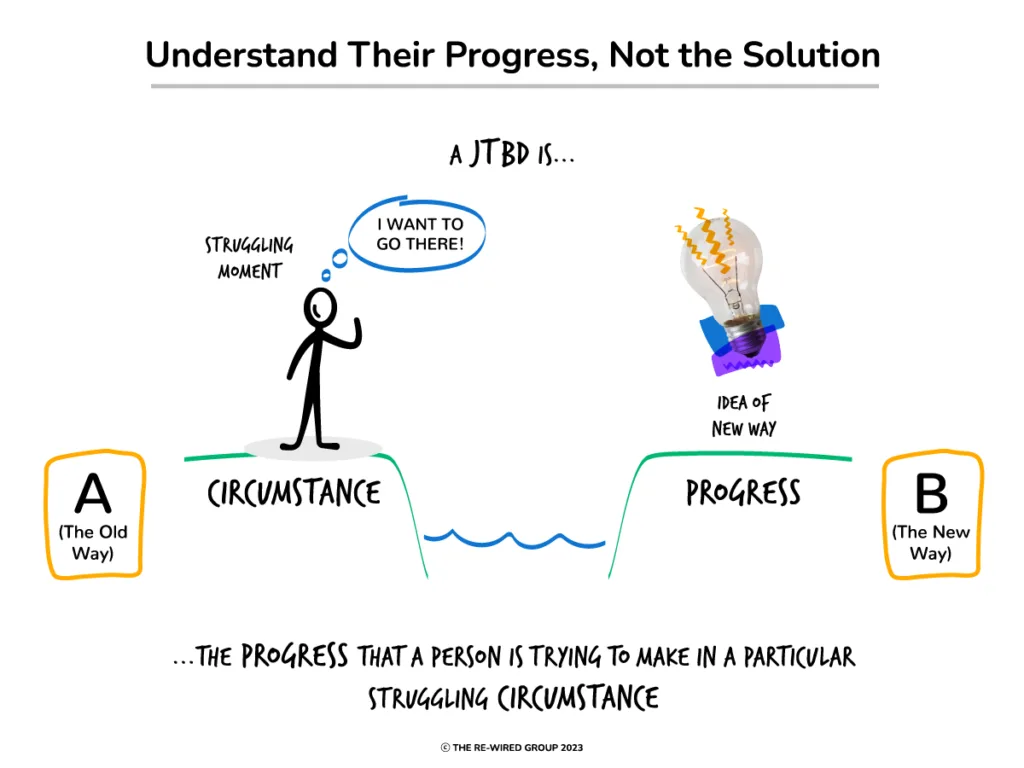95% of new products fail each year. This is a stat, shared by the late Clayton Christensen, that’s not reserved just for the early startups. It’s enterprise corporations too.
There are many reasons for this. Your audience is may be too generic, you’re operating in chaos. Perhaps there’s no clear responsibility for the product itself.
There’s nothing new behind these reasons. Many of these reasons are within your control, others are in the hands of the customer and the context they make decisions.
When you’re looking to double down and grow the right users, you need to understand what are the conditions and the circumstances that impact changes in user adoption, use engagement and user churn.
It’s something we talk a lot about here at The Re-Wired Group, specifically around understanding consumer behavior through the lens of the demand-side.
Let’s start with one of the most important metrics: retention.
Understanding why people stop using your product
Churn is a problematic word. As you scale your product, you’ll be laser-focused on keeping your customer base.
But here’s the thing, churn comes in many guises.
A misalignment between what the customer says they want
You buy something in the hope it’ll allow you to achieve something, and it doesn’t. This could be because it doesn’t do something properly or it doesn’t do it in the way you want it to do it. Then there’s failure because I, as the customer, don’t know what I wanted to get done.
A failure of the company to onboard you based on the struggling moment you’re experiencing
In this instance, perhaps the company didn’t take enough time to understand how the product could help solve this struggling moment. Or, perhaps it took too long to give me the right information.
If you’re new to the concept, a struggling moment is when your customer realizes they need help with something, that there must be a better way to achieve or do something. It’s the seed of innovation and the basis of Jobs to be Done.

Natural drop off rates
You could have a customer that’s been a paying customer for years. You may have renewed multiple times and then all of a sudden, they cancel. This could be because your product was hired for the wrong reason or the customer themselves have moved Jobs.
A new struggling moment
A lot of the time when you buy a product or service and start to use it, new struggling moments start to happen. Sometimes that product can do what I need it to, other times it can’t.
You’ve heard of feature bloat?
Here’s why it bombards your customers. Let’s say you have a product that you change regularly. Every time you change something, introduce a new feature, a new struggling moment is created.
You may have deployed a new way of collecting money, for example. But who cares! It doesn’t matter.
The main reason for churn that you may have not considered: your customer is changing Jobs.
People move Jobs. The progress they need to make changes as their context changes. But how can you identify when someone’s changed Job?
We recommend talking to your customers at three main junctions that are likely to present the right conditions to change/reassess the struggle someone is facing. These are:
- Complaints
- Onboarding
- Before renewal comes up
If someone’s satisfied with the product and they haven’t changed Jobs, you don’t need to do a thing. Don’t tell them about new features. Don’t cloud the landscape with things you don’t need to do.
Want to learn more about churn and how to manage in in your SaaS product? Download our guide, 5 ways to build, launch and scale your SaaS product.